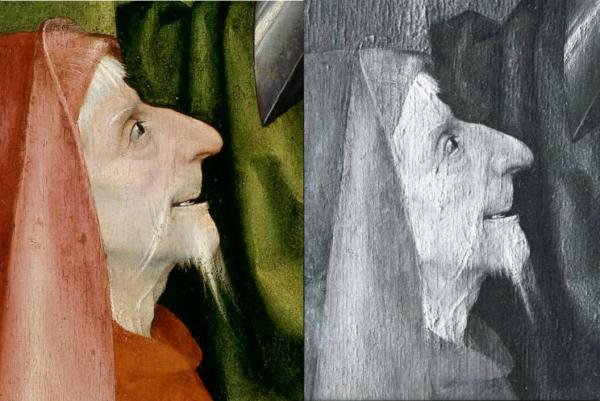Introduction to Raking Light Examinations.
Raking Light Examinations
There are many types of images used for a variety of different purposes in the field
of Conservation today, such as standard visible photography, X-radiographs, and UV and
IR examinations. Here one of the simpler forms of imaging, 'Raking Light' photography,
will be discussed.
Raking Light involves shining a strong light directly across the surface of a
painting, highlighting any surface irregularities. Features such as brush strokes, damages,
raised paint and planar deformations all become more defined due to the shadows they create across
the surface of the painting.
This form of examination is commonly used to document the condition of the surface of a
painting before, during and after conservation.

|
|
Details from: Christ Mocked, Hieronymous Bosch, : ~1490
Oil on Oak, 73.8 x 59 cm. NG4744. The colour image on the
left represents the standard visible examination and the black
and white image on the right shows a Raking Light image taken
of the same area.
|
Current Limitations
The normal approach to a Raking light examination is to set your painting up on an easel
and then adjusted the light to clearly define as much of the surface detail as possible.
The exact position and angle of the light is often difficult to record, making it nearly impossible
to reproduce the same conditions for further raking light examinations of the same painting
later on during the conservation process.
Also if a Raking Light photograph is taken it only records the image with light coming
from one particular direction. The direction of the light, as stated, is normally chosen
because it produces what appears to be the most information. However, even though the
chosen light angle hight lights much information it does not necessarily highlight all of
what could be important.
